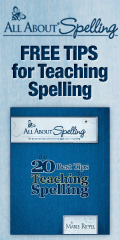20 Ways to NOT BLOW Your Homeschool Budget

This is a guest post from Alicia Michelle. She writes about living the beautifully imperfect homeschooling journey at VibrantHomeschooling.com.
It’s so easy to overspend on a homeschool budget!
There’s just so many great curriculums! So many cool field trips and experiences! And before we know it, we find ourselves spending WAAAAYY more than we said we would.
I’m far from perfect in this area (my weakness is new curriculums!) but God has grown me a lot over the years in this area, and He’s taught me some key concepts that I’d like to share with you.
20 Ways to Not Blow Your Homeschool Budget
1) The library.
Of course the library is an amazing resource for free materials that will keep you on budget! If you do plan to use library resources in our homeschool, I recommend requesting the materials 2-3 weeks before you need them. That’s why the only tradeoff with using the library in your homeschool is that it requires a little more planning and organizing. But you can’t beat free books!
2) Frequent used book stores and keep an eye out for upcoming needed materials.
Right outside our local library, there’s a wonderful used book store that the homeschool moms in my area drool over! I can’t tell you how many treasures I’ve found in there for a dollar or even a quarter!
3) Use what you already have.
What may not have worked for one child may work for another. Or perhaps you may chose to use a something that you just ran out of time for in previous years.
4) Borrow curriculum from another homeschooling family.
Do you have a trusted homeschool friend that you can borrow books from? This is a great way to try-before-you buy or to perhaps trade resources with another family.
5) Consider certain books that may be equivalent but may cost less money.
Is there another book or curriculum that can teach the same material, but at a cheaper price?
6) Discover free resources available on the internet.
Some of my favorite freebie sites can be found here.
7) Make copies of curriculum to share (only when legal of course!).
Look at the fine print here, but in many cases, publishers allow for you to make copies of a resource as long as its within your own family.
8) Substitute something else for your first choice curriculum.
If you find that a curriculum pushes you over your homeschool budget, ask yourself: Is there something fairly equivalent that’s cheaper; or can I put together my own version from multiple free sources?
9) Purchase used curriculum from other moms via homeschooling re-sell groups.
If you must buy a certain curriculum, see if someone else has the item for sale on a homeschool curriculum re-sale group or from within a local co-op or charter.
10) Get the used or “scratch and dent” version.
Consider purchasing a used copy of a book from Amazon or eBay (when available). Sometimes publishers also have “scratch and dent” type deals on some of their curriculum if you’re willing to live with a slightly imperfect product.
11) Go in as a group.
Often curriculum publishers, book sellers, or field trip destinations are willing to lower their prices if there is a large number of purchasers. Homeschool co-ops or charter organizations often can coordinate these types of purchases.
12) Find out which stores offer homeschool educator discounts (and use them).
Did you know that Michaels, Barnes & Noble and the Apple Store give teacher discounts? This post lists 90-plus places where you can potentially get a educator discount! And there may be additional local places in your area with this type of program. Hey, it’s definitely worth looking into.
13) Speaking of discounts, ask about free and discounted homeschool days for field trips.
Nearly every large museum or amusement park offers free or highly discounted “educational days” where they offer some sort of educational experience as part of the visit (and also greatly lower the price).
14) If necessary, make concessions in some areas.
Determine which subjects are a higher priority than others (and thus may require specific curriculums), and be willing to invest in those areas (and to come up with lower cost solutions for other subjects).
15) Pray over your choices.
This seems like such a simple thing, but really, I have been amazed over and over as the Lord has shown me a cheaper (and better!) curriculum option when I’ve just taken the time to ask Him.
16)… and think on it before you buy it.
Homeschool conventions are wonderful for seeing nearly all the curriculum out there. But oh my goodness… I have for sure made some in-the-moment curriculum choices that (in the long run) did not turn out to be the best ones because I felt pressured (or was caught up in the excitement of the convention). Personally, I have pledged to not purchase any curriculum at a convention unless I’ve taken the time to research beforehand.
17) Keep track of what you’re spending monthly with a spreadsheet.
“Homeschooling” is a line item in our cyclical monthly budget (I allocate money to “cyclical” expenses–expenses that don’t occur every month but we still need to account for–and homeschooling is one of them). This helps you see how much you’ve really spent, and how much money is still available.
18) Be willing to think outside the box (in terms of categorizing your spending).
Can a new book become a birthday present? Obviously this won’t work in every situation (“Honey… aren’t you happy that we got you a new math workbook for your birthday?”). But in some cases a really nice set of classic literature (like this box set of The Chronicles of Narnia ) or a learning game could also be a nice present from Grandma. Or how about if a fun field trip doubles as a family vacation or birthday event? Our family has different categories in our budget for “gifts,” “birthdays,” and “vacations,” and I’ve used these funds to pay for homeschooling items before if they doubled as both.
19) Stick to your plan and get accountability.
Self control, right? Sometimes we need someone else to help us just say no. That can be a spouse or even a fellow homeschool mom.
20) But ultimately, pledge to be realistic.
If a child desperately needs a curriculum option, it may be worth going over budget (or using money from another area in the budget) to find a new option (obviously that’s up to you and your husband). If you find yourself perpetually overspending every year on your homeschooling budget (and you feel that you’re not necessarily spending beyond the essentials) perhaps it’s time to reconsider if the amount budgeted is realistic. Again, what’s “realistic” (and what actually can be spent) is only something that you and your husband can ultimately determine.
How about you? What are your homeschool budgeting secrets?
(A variation of this post originally appeared on Vibrant Homeschooling.)
Alicia Michelle writes about living the beautifully imperfect homeschooling journey at VibrantHomeschooling.com. She has been married to her best friend for 14 years and together they spend their days lovingly guiding their four passionate and creative kids.
Alicia is also the author of Plan to Be Flexible and the creator/producer of Vibrant Homeschooling’s online video courses “bloom: A Journey to Joy (and Sanity) for Homeschool Moms” and “rhythm: Guiding Your Family to Their Ideal Learning Flow.”
She believes each day offers new opportunities to grow in grace and to trust God in unexpected ways; and that “acceptance with joy” is one of the hidden secrets to a full, contented Christian life.
You can find her at Vibrant Homeschooling as well as on Facebook, Twitter and Pinterest.
Latest posts by Free Homeschool Deals (see all)
- Saxon Math 3 Resources - March 31, 2025
- Wonderings eZine - February 27, 2025
- All About Me Coloring Page Bundle - February 24, 2025
- FREE Valentine’s Day Printables, STEM Activities, & Experiments! - February 4, 2025
- Top 10 STEM/STEAM Activities for the Winter Months! - December 2, 2024






